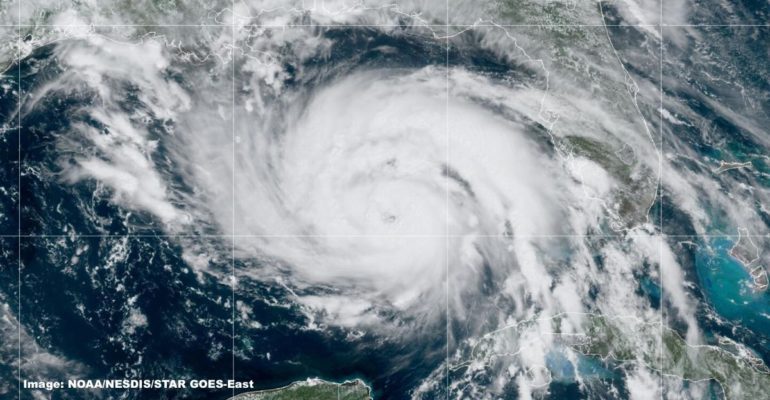Following Hurricane Ida’s August 29 landfall, LDWF staff estimate that approximately 280 million fish were killed in inland waters, over an area that spanned approximately 1.8 million acres.
LDWF staff notes strongly that there is no way to know exactly how many fish were killed following the storm. However, biologists have generated an estimate by using several factors – wetland maps, the known extent of fish kills, historic fisheries samples using rotenone (a naturally occurring fish toxicant), and expert opinion regarding the severity of kills.
By comparison, LDWF biologists estimated 200 million fish were killed after Hurricane Andrew in 1992.
LDWF logged information from 20 fish kills throughout Southeast Louisiana – collected from public phone calls, staff observations, and social media posts. These records spanned an area of roughly 1.8 million acres, and most occurred in the week following Hurricane Ida. Fish of varying sizes and species were observed in kills.
Tropical cyclones often cause the deaths of large numbers of fish, and Ida was no exception. During these weather events, high winds and storm surge create low-oxygen conditions by churning up sediments and blowing debris into waterways. Some areas experienced low-oxygen conditions for up to a month following the storm, while others recovered relatively quickly.
All reported fish kills, except for one near Gibson, were in areas that experienced hurricane-force winds. The Lake Maurepas drainages were particularly hard hit, but Lake Pontchartrain and the East Bank of New Orleans fish populations seem to have been largely spared.
LDWF staff use experience from previous storms to forecast how fish populations will recover.
Generally, catchable fish will be scarce for approximately a year following a large fish kill. Waters that experience massive fish kills, often have areas that are spared. These areas are usually connected to other waters that were spared. In the months following a fish kill, surviving fish spread out over the depopulated area, benefitting from a landscape with little competition or predation and increased nutrients. The following spring, they will spawn with extremely high success rates. Because of this, the department generally witnesses increased numbers and growth rates of fish populations across the board, including sport fish. This pattern has been documented in the aftermath of several large storms in the 21st century.
For more information about the causes of fish kills, or to report a fish kill, visit www.wlf.louisiana.gov/page/fish-kills. To see how fish populations in other waterbodies have been impacted and recovered following hurricanes in the past 20 years visit the Inland Waterbody Management Plans page. Summaries of storm impacts are in Management Plan Part A and biological data on fish populations are in Management Plan Part B.





